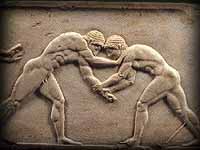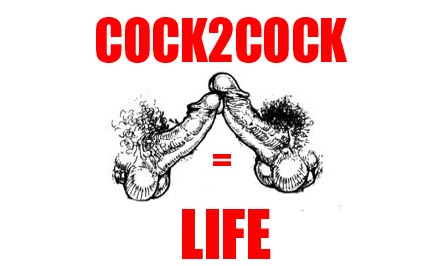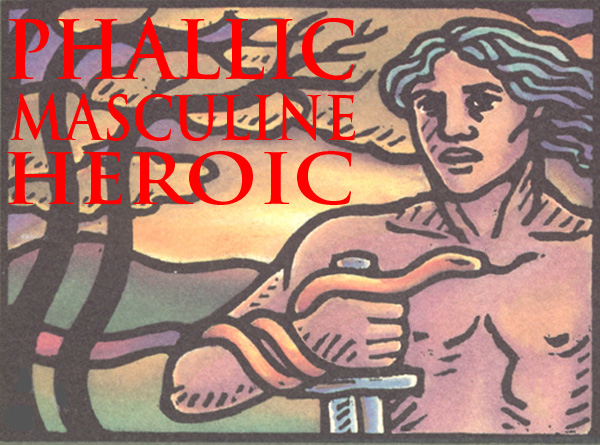




"terrible, irreversible damage" -- Dr. Myron Cohen on HIV, anal, and AIDS






"terrible, irreversible damage" -- Dr. Myron Cohen on HIV, anal, and AIDS

"terrible, irreversible damage" -- Dr. Myron Cohen on HIV, anal, and AIDS
8-30-2006
On June 20, 2006, Dr. Myron Cohen addressed the President's Advisory Council on HIV / AIDS (PACHA).
Dr. Cohen is J. Herbert Bate Distinguished Professor of Medicine, Microbiology and Immunology and Public Health at the University of North Carolina at Chapel Hill. And Director of the NIH STD Clinical Trials unit. Also Director of UNC Division of Infectious Disease and the UNC Center for Infectious Disease. And he's published over 400 articles.
Dr. Edward C. Green, who's a member of the PACHA, alerted me to Dr. Cohen's remarks, which are telling.
Here are some excerpts from Dr. Cohen's remarks -- you can access the mintues of the entire meeting here.
It makes no sense to believe you can treat your way out of this problem without much more intensive prevention activities where we've not done a good job by any measure. We've not succeeded in prevention in the United States and certainly not on a planetary level. So we have to hope for better strategies for the next 20 years.
..
This is a biological event. HIV, you don't get a little HIV or a lot of HIV. As far as we know, there is the transmission event and the transmission event is dependent on infectiousness and susceptibility. And we're really certain that the concentration of virus in the genital secretions or in the blood, but especially the genital secretions, are going to explain most transmission events and this is not rocket science. Most infectious disease depend on the inoculum. So we're very concerned about inoculum.
We're also concerned about viral phenotypic factors because we're reasonably certain that the type of HIV we have in the United States, clade B or Type B is not as contagious as some of the clades in other parts of the world. So while we see people living in other parts kind of mislabeled as misanthropic sexual people, a lot of this epidemic has to do with biological disadvantage and we see that biological disadvantage at some level in terms of inoculum and phenotypic factors.
We see it played out even more aggressively in susceptibility. We know that about one out of 100 white people have a hereditary resistance factor to HIV. Resistance is very rare with people with color. We know that there is innate resistance in some white people and we know that there might be some people with acquired immune resistance which would help us to make vaccines. We'll get to that later.
So infectious and susceptibility equal a transmission event and if you're lucky, you don't have a transmission event and if you're unlucky, you have a transmission event. Our job is of course to prevent this transmission event.
[emphases mine throughout]
Dr. Cohen then explained that in an article he co-authored in 1997, he got the probability of sexual transmission wrong:
These sexual transmission numbers are an incredible mess and I won't tell you how we got into this mess, but that mess has helped give a bad message to people. That message that we've sent to people is that it takes thousands of episodes of intercourse for HIV to be transmitted and that really is not true basically. These numbers, and if there is time for the discussion, I can explain how we made such a mess out of this, but the methods we used confused the message and we used a set of methods in the late `80s, early 90s, that made an incredible mess out of our understanding of HIV transmission.
..
It's more like 20 or 30 episodes of [hetero] intercourse. So the first shocking message is that HIV is not so inefficient.
And we know that most people on the planet have sex about eight to ten times a month until they start getting older. ... It's very difficult then to get to 3,000 episodes of intercourse for most of us in this room, maybe even in a lifetime let alone in enough time to have a transmission event.
..
Most people clearly when they get exposed, then within two or three days after exposure they have ramp-up viremia and for reasons we don't understand completely there is tremendous and rapid replication and people achieve a peak of a million to a billion copies of HIV and as they're achieving that peak, they're antibody negative. So if you went to a clinic and said test me today, you would be at your most contagious of your whole life, but you would be antibody negative.
Now of course the antibody test can get better and better and better. But they can only get so good because the host requires several weeks to make antibodies. That's the rule of our species. No matter how good the antibody test gets, there's always going to be this window period of high contagion in an antibody negative person.
I should point out to you that it's during this window of time of rapid viral replication that the host is undergoing a terrible destruction and that is we're pretty sure now that CD4 memory cells, the central memory cells, living in the gut are all wiped out within two or three weeks. We have this experience now kind of written in stone with monkeys where if you take a monkey and you infect him with HIV and you follow their gut lymphocytes in what's called the central memory pool, it's destroyed in weeks and now biopsies have been done in humans with very early and acute infection by again Danny Douek showing the same thing. This is terrible irreversible damage. So whatever CD4 you end up with after you recover from your acute infection, you never have the same number of CD4 cells available to you as before this gut pool is wiped out.
Bill Weintraub:
Right now the big push in America and worldwide is for universal testing.
And I certainly support that.
But, and speaking just of gay males now, if people can test negative when they're so infectious, doesn't it make more sense to tell them to not do anal?
Because what will happen is the guy will say -- I'm negative -- believing it to be true -- and then infect eight to ten people per month until his next HIV test.
But if he doesn't do anal, his chances of infecting anyone plummet to near zero.
Another big push in the gay male community is "sero-sorting" -- encouraging guys who are poz to buttfuck and bottom with other poz guys.
Bareback of course.
But -- Dr. Cohen has said that in the days and weeks following infection, "you would be at your most contagious of your whole life, but you would be antibody negative."
Which means that sero-sorting is actually dangerous and misleading.
Guys who think they're negative on the basis of an HIV test can sero-sort and still infect ten, twenty, thirty guys.
Plus the poz guys acquire variant and mutant strains.
Sero-sorting induces a false and indeed deadly sense of security.
The other devastating event that we're pretty sure about is the integration of HIV into the genetic material of the host. So when you start out, your genome actually has a lot of retrovirus from millions and millions of years of evolution. About six percent of the whole gene is retroviruses. But you don't have HIV incorporated in your genome and so in the very earliest days of HIV infection we can see a very small number of integrated events, but then after acute infection has transpired, we see a heavy dose of integrated events. The reason we can't cure HIV infection is because of the integrated DNA. So if we could deal with the integrated DNA, get it all out of integration or prevent it from ever being integrated, we could potentially cure this infection. So we have a lot of reasons to be interested in acute HIV infection, surveillance for instance, prevention and earlier treatment and so on and so forth.
..
Bill Weintraub:
So: HIV becomes "integrated into your DNA."
And for every person we find with acute infection, we find a terrible thing really. They don't have one partner. We find three or four or five partners. And there are three universes for the partner. The partner can have established infection and they could have given their established infection to the person with the acute infection or the partner can have acute infection or the partner can be HIV negative. Of course, the partner who is HIV negative becomes an unbelievable prevention effort for us to prevent a transmission event from occurring and the partner with established infection or acute infection also becomes important to the overall prevention strategies for our state.
And what's important is where do we find these people. So here are the testing sites, STD clinics, HIV testing sites, prisons and jails and other. Most of the testing in most states goes on in STD clinics and remember this is bias because we have opted in testing. This is less than half than all the people who have come to STD clinics in our state. So we don't know what happened to the other half of the people. We only know what happened to this half.
..
But we know that we find established infection, recent infection and acute infection mostly in STD clinics and as I'm going to tell you in a second, this isn't surprising because we think HIV transmission is primarily -- Well, first of all, HIV is another STD. So it's the same behaviors that lead to STDs lead to HIV and second, we think that much of HIV transmission is actually a two step process. It involves a classical STD as well as HIV.
Bill Weintraub:
This was one of the points Dr. Cohen wanted to emphasize:
that co-infection with another STD like herpes is crucial to infection.
HOWEVER, as we'll see, he doesn't believe that's the case with MSM.
Because anal is so traumatic and so efficient at transmitting HIV, the presence of a co-agent is moot.
So in summary and then I'll stop and entertain any real dialogue, genital tract viral burden determines HIV transmission. I think we can probably agree on that and there's not a lot of disagreement. STDs and HIV are likely sequentially transmitted and large numbers of subjects with acute HIV infection will present with STDs especially ulcer disease. So I think we could probably agree on that, that STD are important, although I've already indicated to you it's been hard to demonstrate that you can treat your way out of the epidemic.
Dr. Cohen then takes a question from Frank Judson, an MD, MPH, and PACHA member.
MEMBER JUDSON: Mike, these are always great and I certainly always I think recently agreed with your view of the biologic-viralogic world. And I think where we may disagree although probably not is what you do with this information from a practical standpoint in terms of public health control programs.
One thing I'm sure we'll agree with is as Thomas Perron said many, many years ago "When you're faced with a diabolic enemy, you use every weapon at your control" and wherever there's a reasonable possibility for efficacy we should pursue that.
The next thing that comes to mind in my varying experiences is that in looking at epidemiologic information that would attempt to show causation between co-infections with other STDs and HIV transmissibility, in my view none of these studies has ever been constructed in a way that can prove causation. You don't know even what the order of infection is and in most of them, the majority of the easiest ones to do has been cross sectional and you simply cannot do it. So that accounts for the huge variability and results from study to study, location to location, organism to organism.
Then I take that information and I try to say what do we do with that. The people who believe that other STDs, there are some who believe that HIV doesn't need any help from the other STDs and I probably fall closer to that. But I'm not willing to B- I'm not attempting to exclude in any role at all for them.
But I think the question then is what you do with it and I don't think that, as I think most here don't think that, it's really possible, practical, economically feasible to treat our way out of the HIV epidemic. That means either directly or indirectly. I don't think we can do it directly with antivirals without changing fundamentally exposure behavior and I would be even less certain that we could ever do it indirectly by attempting to eliminate other STDs.
For this I go back. Some of the most formative experiences in my career go clear back to gay men. In 1970s, when there were such incredible rates of STDs, all STDs in gay men, but we're owing to bathhouses and multiple concurrent partnerships, the same thing, gonorrhea, syphilis, hepatitis B were 20 to 40 times more common.
We thought we had in Denver practically as good of clinics as you could have, outreach to the bathhouses, to the gay groups, homophobia was not a major issue. We through every resource did everything we could. There was open access. We treated thousands and thousands of cases of gonorrhea in gay men every year and we never got anywhere. By the end of --
DR. COHEN: With HIV. Never got anywhere with HIV.
MEMBER JUDSON: Yes, we never got anywhere before fear of AIDS and fear of AIDS managed to reduce over a three year period looking backwards through sero-archeology (PH) incident rates for HIV probably 70 to 80 percent then, by the end of the decade probably close to 90 percent. Within three to fours, the incidence of gonorrhea, syphilis had dropped by 90 to 95 percent.
This is the power of change in behavior. We couldn't measure it. There were no CDC prevention programs at the time. These were gay men understanding how their sexual behavior probably spread this deadly condition. So I think we're faced now with the same things in the developing world and everywhere. Unless we come to terms with the fundamental driving factor of multiple concurrent partnerships often during the early most acute stage of infection, often before infection has even been detected, our success is going to be limited and to continue to I think debate approaches if we treat gonorrhea -- I'll ask you. Do you think we can treat our way out of HIV by simply treating gonorrhea or syphilis?
DR. COHEN: I'm going to give an eight word answer. One is no one is going to disagree about embracing all the tools in the toolbox. It's the first five words. Second is I think using the gay sex thing in Colorado is probably a bad idea because the efficiency of rectal intercourse changes everything because of the number of dendrite cells, receptors and trauma. So you can never overwhelm, you can't win against anal intercourse. It's almost impossible.
Not gay. Anal intercourse is a really bad sexual practice for HIV transmission. It changes the equation. The efficiency is probably one in ten or one in eight.
A really important exchange.
1. First off, Dr. Judson states that we can't treat our way out of the epidemic -- that there has to be fundamental behavior change.
Then he notes "incredible rates of STD" among gay men in the 1970s -- "20 to 40 times more common."
That was due to anal.
As I've often pointed out, prior to the mid-70s and what I've called "the great anal pentration frenzy," there was no difference between the health of gay men and that of straight men.
But as gays became more ghettoized -- and this is what we'd expect under heterosexualization -- there was more and more anal and more and more disease.
2. That in Denver in the 70s, homophobia was not a major issue, but they still had "incredible rates of STDs"
3. What changed behavior among gay men wasn't CDC programs but "fear of AIDS": "These were gay men understanding how their sexual behavior probably spread this deadly condition."
And Cohen responded that gay men were not a fit guide to dealing with the epidemic in places like sub Saharan Africa because "using the gay sex thing in Colorado is probably a bad idea because the efficiency of rectal [inter]course changes everything because of the number of dendrite cells, receptors and trauma. So you can never overwhelm, you can't win against anal intercourse. It's almost impossible.
"Not gay. Anal intercourse is a really bad sexual practice for HIV transmission. It changes the equation. The efficiency is probably one in ten or one in eight. "
When Cohen says, "not gay," what he means is that this applies to hetero anal as well.
"you can never overwhelm, you can't win against anal intercourse. It's almost impossible...
"Anal intercourse is a really bad sexual practice for HIV transmission. It changes the equation. The efficiency is probably one in ten or one in eight. "
So: after all that scientific discussion here's what we learn:
1. Anal is far more efficient than vaginal at transmitting HIV.
2. So much so that co-infections with STD like herpes probably don't matter if you're MSM.
3. Trauma matters.
4. HOMOPHOBIA does NOT create STD or AIDS.
Yet program after program in MSM HIV / AIDS prevention seeks to address homophobia as a problem.
I'll look at that question in more depth in a separate post, but it's basically nonsense.
It's not homophobia.
Yet NO ONE other than ourselves will take on the question of the one behavior which accounts for 90% or more of MSM HIV transmission.
Bill Weintraub

© All material Copyright 2006 by Bill Weintraub. All rights reserved.






AND


Warriors Speak is presented by The Man2Man Alliance, an organization of men into Frot
To learn more about Frot, ck out What's Hot About Frot
Or visit our FAQs page.


© All material on this site Copyright 2001 - 2010 by Bill Weintraub. All rights reserved.


